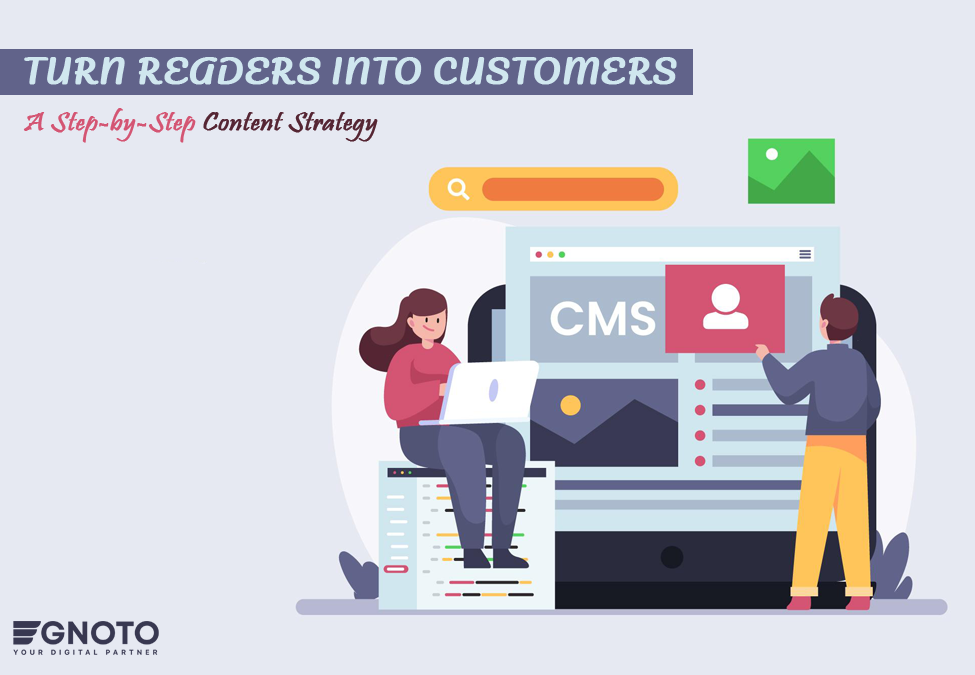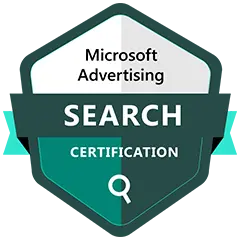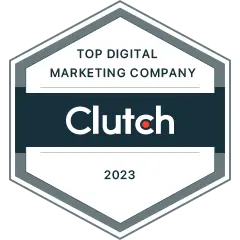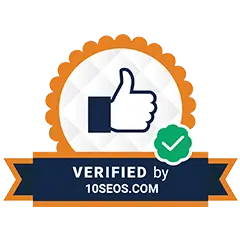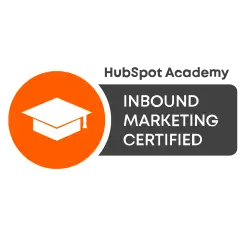Don’t think of conversion; think about your audience. Yes, this is the simple rule for creating content that converts. Millions of blogs are written daily, but most are lost in the archives because they focus on conversion instead of keeping the audience in the center.
However, content marketing is not only about blogs. It’s about creating valuable, relevant, and engaging content in various formats, such as videos, social media posts, and eBooks. Different formats better speak to your audience’s needs and desires.
But things are not as easy as earlier.
With rising competition and AI content, the right approach is essential if you want a higher conversion rate. So, how can you create a content strategy that converts? Explore our blog thoroughly to know which type of content is helpful for higher conversion and which mistakes you should not make.
Let’s begin by knowing what a conversion rate is for better understanding.
Conversion Rate: Explained by Digital Marketers
The conversion rate is the percentage of people who have completed a desired action. This action is not always related to sales. It can be related to any goal you have set, such as signing up for a newsletter, filling out a contact form, or even clicking on a specific link. Conversion rate measures how effectively your content turns visitors into leads.
Once you achieve the business objectives, you can call it a conversion. Here is the formula to calculate conversion.
Conversion Rate (%) = (Number of Conversions / Total Views) x 100
What do you want to achieve through content marketing other than views? The formulas can be modified accordingly.
For example:
If you want to measure ad or content exposure, such as how many times an ad was shown, the formula will be
- Conversion Rate (%) = (Number of Conversions / Total Impressions) x 100
If you want to measure how many times users click on something, such as a call to action button. The formula will be
- Conversion Rate (%) = (Number of Conversions / Total Clicks) x 100
Or if you want to track how often users engage with your site. It includes all the visitors. The formula will be.
- Conversion Rate (%) = (Number of Conversions / Total Sessions) x 100
So, it depends on the marketer’s goal that what they want to achieve.
Effective Steps to Create a Winning Content Marketing Strategy
Here are some steps that you can follow to create a winning marketing strategy for your next content and ensure higher conversion.
Step 1: Set Clear Goals:
What exactly do you want to achieve through the content? If you can clarify this, you are moving in the right direction. Are you aiming to increase brand awareness, generate leads, drive website traffic, or others? The more specific you are, the less you will have problems measuring success and optimizing your results.
Clear goals also help you choose the right content type because you know who you are targeting and what actions are required.
“Setting goals is the first step in turning the invisible into the visible.” – Tony Robbins.
Step 2: Keep Your Audience in the Center
Now comes the most crucial part: “Audience.” As discussed in the beginning, considering audience interest, demographics, and preferences while creating a content marketing strategy can lead to higher conversion rates.
But how to do so?
When you talk to the audience face to face, you know who you are talking to. But communicating through writing is difficult. So, follow the below points to create an audience-centric content marketing strategy.
- Know your audience’s pain points and create content that addresses their problems.
- Segment your audience based on demographics, age, and interests. This step will allow you to effectively target them with personalized content.
- Tailor your tone according to your audience. It can be casual or formal, but also consider the brand voice.
- You can use storytelling in content marketing to emotionally connect with the audience.
Step 3: Find Proven Content Ideas
When you know which type of content can deliver the best results, why waste time experiencing other types? For example, we all know short-form videos can increase visibility faster than blogs. Moreover, around 47% of marketers believe short-form videos are more likely to go viral.
So, if you want to increase your business’s visibility, what type of content would be the most effective? You know the answer.
Similarly, if you want to build trust with your audience, long-form, in-depth blog posts or case studies can work more effectively than short-form videos. These types of content establish authority and provide real value, which Google highlights in its new framework, EEAT.
Step 4: Leverage the Power of Data Analytics:
Analytics can make your life easier by providing insights into all aspects of content marketing. Tools like Web Analytics, Google Analytics, and others track page views, time on page, and user behavior to understand which content resonates the most with the audience. Apps like Audience Intelligence track the moments of your audience and help you understand them better.
Moreover, with content optimization and SEO tools, you can identify where improvement is needed, how current content differs from old ones, and what trendy keywords are. Moving ahead with data analytics increases the chances of content success.
Step 5: Use Storytelling in Your Content:
Storytelling is the most effective way to engage people because it evokes emotions like happiness, fear, anxiety, pride, trust, compassion, and others. Once you have understood your audience effectively, use the right emotion in your content so that they can relate to it.
When audiences connect with your content, they are more likely to convert. Many big brands have used this strategy for a long time, and it still works. You can utilize platforms like Facebook, Instagram, Twitter, and YouTube to tell short stories.
Stories can be related to products, customers, brands, and services. Stories are wise choices for long-term relationships because people remember them for a long time.
Step 6: Create Catchy Headlines and Titles:
If no one likes your title, they will not click on it and read it. When your audience is not reading or showing interest in your content, it can’t increase the conversion rate. Do you know half of Google searches end without clicks? According to research, around 58% of searches in America and 60% in Europe end with zero clicks.
This means that people don’t click on most content. A poor title is one reason: people judge a blog or video without clicking on it. If they like the heading or title, they click on it, increasing the chances of conversion. Focus on the below points while creating a title and headline.
- Clear
- Concise
- Trendy
- Exciting
Have a look at the news title and YouTube thumbnail below. You can create click-worthy titles like them.
Step 7: Optimize the Content Performance:
Often, you try to follow all the steps cautiously, but many things can only be seen in the results or how the content performs. Content optimization is an ongoing process. Your content creation should begin and end with it. With the help of optimization, you can find problems in the content that your competitors may have missed.
- Optimize content for SEO:
Begin with keyword research. Use an effective tool for it and do the research once and for all.
- Analyze your competitors’ work:
With the help of tools, you can analyze the performance of your competitors. You can understand what is currently ranking on Google, what the trends are on social media, and why.
- Optimize for Call To Action:
CTAs should be accurate for good conversion. Place CTAs strategically on your content, whether it’s a blog, Video, or social post. Try different styles and place them in different places to check their performance.
5 Mistakes You Can’t Afford to Make in Content Marketing
You have learned what to do so far. However, more is needed for a winning content marketing strategy. The process can be less surprising if you know what not to do.
1. Not Knowing Audience:
You are creating content for the audience; they will read, watch, and buy your products. If you do not create a content marketing strategy, keeping them in mind, achieving the goal can become difficult.
Marketers often make this mistake when they hurry to implement the strategy, thinking the campaign is for every type of audience rather than segmenting and targeting specific groups.
2. Neglecting The Power of AI-driven Tools:
If you still use old content marketing methods, you might fall behind in the fierce competition. Using AI tools can increase click-through rates by around 130%. Moreover, 81.9% of marketers believe that AI-generated content is as good as human written.
With the help of AI, you can automate many tasks, such as idea generation, content creation, editing, proofreading, optimization, and more. You will have to do all these tasks manually if you do not use AI tools.
3. Not Finding Reasons Behind Poor Conversion:
Why is your content marketing strategy not working and driving conversion? Often, you move ahead without finding the reason behind the poor conversion. This is the biggest mistake. If you keep making it, achieving higher conversion can remain a dream. So, find reasons and use tools to speed up the process.
4. Using Trends After They Have Faded:
What is trending in 2025 may not be trending in 2026. Leveraging trends after they fad up cannot provide value and can be a waste of time. So, leverage trends when they are popular and driving results. Stay updated with what’s hot and what is not.
Here are some trends that are no longer popular.
- Keyword Stuffing in content
- Utilizing Only Blog Content Format
- Overuse of Clickbait Headlines
5. Not Diversifying the Content Types:
Various types of content formats exist, such as infographics, videos, gifs, memes, blogs, social posts, eBooks, articles, etc. If you only rely on a specific type of content, for example, a blog or video, it can be a mistake you can’t afford if you want higher conversion rates. Sticking to one type of content format can limit your reach.
Here are some widely used content formats that you can use to create a content marketing strategy.
Visual Content:
- Infographics
- Images
- GIFs
- Animations
- Videos
Engaging Content Formats:
- Podcasts
- Webinars
- Social media posts
- Memes
Informational Content:
- Whitepapers
- How-to guides
- Checklists
Long Story Short:
You can create a content marketing strategy that converts by focusing on audience and content optimization. Find effective content ideas, leverage trends quickly, and think of providing value to your audience. Throughout the process, AI tools can help you effectively. Moreover, the basics of content creation always stay the same, so always consider them when creating engaging content for your audience.
And, you are ready with a killer piece of content!
